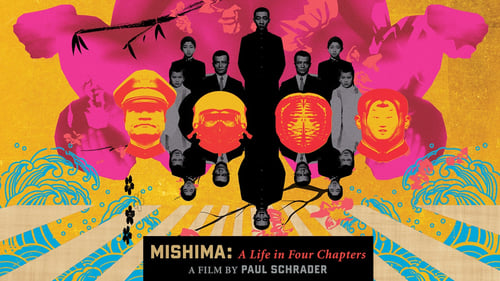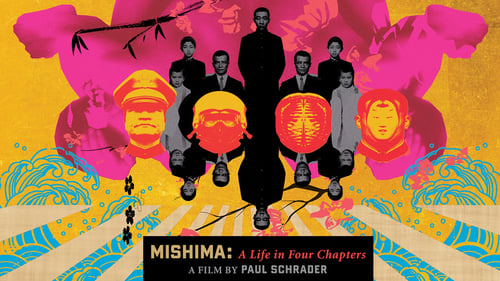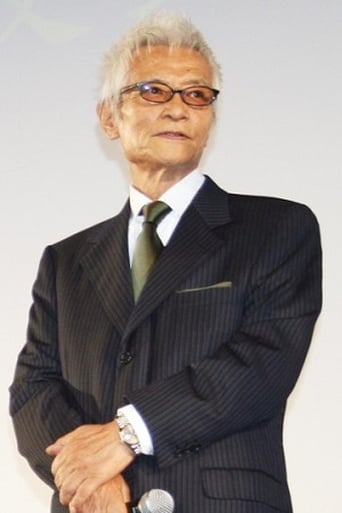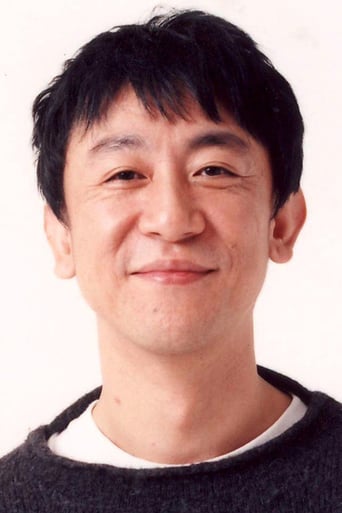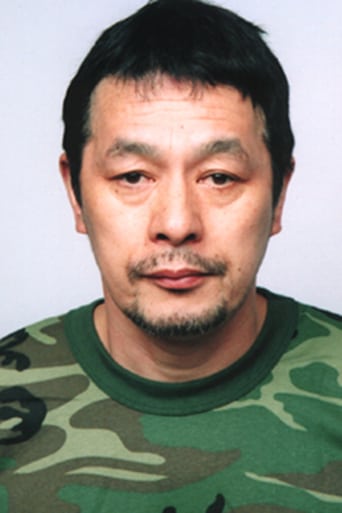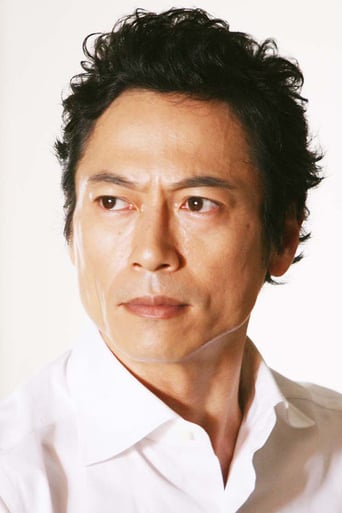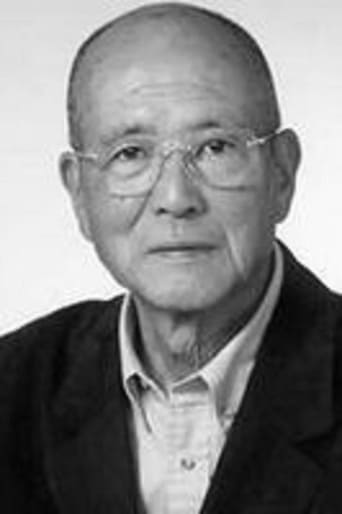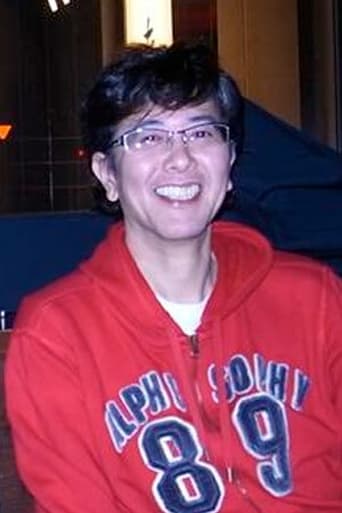Reptileenbu
Did you people see the same film I saw?
Merolliv
I really wanted to like this movie. I feel terribly cynical trashing it, and that's why I'm giving it a middling 5. Actually, I'm giving it a 5 because there were some superb performances.
Ortiz
Excellent and certainly provocative... If nothing else, the film is a real conversation starter.
CitizenCaine
Paul Schrader and his brother Leonard wrote Mishima, and in so doing, clearly drew parallels between the life of Yukio Mishima and his work. The film is divided into four sections: beauty, art, action, and the fateful day when Mishima held an army general hostage and spoke to the garrison, only to have it ridicule him and his Bushido ideals of the samurai code. Mishima committed ritual seppuku on November 25, 1970, and he planned it as a meshing of beauty, art, and action. Schrader edits scenes recreating that day with three different scenarios from Mishima's novels: Temple of the Golden Pavilion, Kyoko's House, and Runaway Horses. The moment of seppuku is perfectly realized in relation to its shocking climax via pulling back the camera while simultaneously zooming in. Black and white sequences are intermingled with the colorful moments depicted in Mishima's novels. The black and white scenes represent memories from Mishima's childhood and youth. Schrader correlates some of these autobiographical moments with scenes from the novels that often parallel Mishima's real life, such as his stammer, development of his bodybuilding obsession, and his fostering of the samurai code. Each of the three themes of beauty, art, and action is exemplified in the chosen depictions from the respective novels. The color sequences are reminiscent of early, stagy Technicolor films, giving the film, perhaps, an intended surreal quality considering the subject matter.Ken Ogata plays the real Mishima with unfailing determination, headed to the general's office on that fateful day and resembles the real Mishima. Schrader took tremendous risks with this film in focusing on the novels he did and with tying them thematically to both Mishima's personal life and his literary ambitions. The editing of the film between the three main sections of November 25, 1970, the black and white growing up segments, and the colorful novel scenes clearly point to the deliberate intersection of these elements of beauty, art, and action in Mishima's life. At times, it is difficult to follow, and there may be little to recommend for the uninitiated viewer. *** of 4 stars.
CharlesHile
Mishima: A Life in Four Chapters is an art-house biography about Yukio Mishima, celebrated Japanese writer, who bears resemblance to Paul Schrader's earlier character Travis Bickle (Taxi Driver): both of them are lonely people searching for their place in their society and when they realize that world doesn't need them, they try to destroy their surrounding universe.If you want to learn about life of Mishima, then you won't find a lot of information here, because it shows that he didn't live a very interesting life (except for his final day), but if you want to understand his personality, then it is the best movie of its kind, as most of the movie is adaptation of his novels and also provides a guide to his thoughts. This movie shows that Mishima was a person, who witnessed the fall of Japanese culture, which he was very fond of and with his final act he tried to save traditions and prove to himself that he is a real warrior, but he realized that as a person he was just a man with no power to change the events.
Islandeye
Mishima: A Life in Four Chapters is an emotional mosaic of a film, there is as the title suggests a clear structure of four chapters, but inside these are three separate - but cohesively linked through what they observe in the character of Mishima - modes of storytelling. They can be broken down as past (From childhood to the last day of his life), present (a real-time following of Mishima, ending with his famous act of public seppuku) and imagination (Three of his novels brought to life). It's rare that a film is so interconnected through style, substance and structure, the organised wholeness reflecting the subconscious life-long mission of perfection that Mishima embarks upon, ending in (when observed as a whole) what seems like a predestined fusion of artistic expression, destruction and a longing to change the world. There is a rolling development to the character, glimpses of ideas and emotions in his past are exposed and consciously studied in his novels, and are fully realised in his final act of self-crafted spiritual beautification, an act which can be viewed as culmination of the depths probed in the first three chapters of the film; art, beauty and action. The final chapter, The Harmony of the Pen and the Sword, is the most honest and brutally real, no novel to hide his extreme personality and ideals, baring his soul forcefully through protest and finally destroying himself at his highest point of honour and power.The film is incredibly arresting, the style different for each mode, each with its own visual language and manner of exploring Mishima. His past, in harsh black and white, is shown in an un-probing way, in a near historical-recollection fashion, and we simply follow his life. At first the novel sequences are quite jarring, they are so vibrant, raw and colourful, full of telling compositions and beautifully crafted, hyper-stylised sets. They are all rooted in total blackness, like they've just sprung up in Mishima's mind (occasionally the novel sequences are preceded by a scene of Mishima writing), the absorbing artificiality of it all is at odds with the shut-out realistic style of his past. It's a bold move to blend such opposite visual storytelling techniques, but the events of his past amalgamate with the beauty and emotional forwardness of the novel sections to fully conjure up Mishima. Neither would work on its own, but together they work as one and fill in the gaps that they other left out, the lack of expression in his past is filled with the constant rampage of passion found in the novel sequences, and the lack of conjunction of each novel sequence is an irrelevance as they compose of crucial elements we are now able to see reflected in Mishima's past life, and most importantly his final day. Starting with Mishima getting ready, there's a roaming kineticism to the camera. The focus is stuck on Mishima, gliding over his immaculate army uniform and watching him button up in close up. It's a very finalised way of shooting, like everything is being seen for the last time so is given a grand send-off. He is followed documentary style, hand-held camera and tracking shots structured in real-time. This almost displaces Mishima in the external world, in some ways casting him in a different light, making him seem like a determined mad man in a world full of coasters. Philip Glass' score is outstanding, punctuating Mishima's fixed path with absorbing rushes of sound. Like Mishima, the score has an evocative presence, a complicated array of short stabs of strings and bells, repeated over and over again but never faulting in aiding the visual climate.The film is an interpretation of Mishima, but is surprisingly without conclusion. This is not a flaw, Schrader bravely chooses to avoid judgment or criticism, putting Mishima in an as-close-to objective light as possible. Through the sociological fundamentals of sexuality, political action, art, and the body, Mishima attempted to perfect himself. He achieved great literary success, he body-built himself into a towering statuesque figure, he formed a private army of dedicated fellow traditionalists. What conclusions can be drawn from these achievements? Many, but I believe that Mishima is a man who never lost his childlike yearning to change the world. He carved his own destiny out of his body and his work, set his mind on a clear path early on and obstinately followed it to the glorious end. Whether or not one agrees with his life's work, I cannot help but admire his yearning for fullness. Someone who is so rigid and immovably confident in everything he does may seem unlikable, and he most certainly isn't a likable character in the strictest sense. He is, simply put, a self-formed piece of art. A piece of art that I cannot help but be fascinated by. Mishima: A Life in Four Chapters does the impossible and shows a life eternally connected to art, a life defined and destroyed through art, and fittingly it is a colossally profound and ambiguous work, a ravishing exploration of a man who melded integral desires of creation and impact together to shape something unique and special in himself, in death he was his own vision of perfection, even when the world was not.
Galina
The film, original and hypnotizing depicting of the fascinating Artist's life through his writings, works, especially in the first two chapters, "Beauty" and "Art". They are nothing short of perfection if you ask me. Amazing blend of three different styles - quasi documentary of the last day in his life, black-and-white flashbacks of his earlier days and exiting and stylish color sequences of his novels "The Temple of Golden Pavilion" and "Kyoko's House" helps to understand the constant and tragic search of Mishima's protagonists for beauty and for meaning of art. Two last chapters, "Action" and "Harmony of Pen and Sword" seem weaker than the first two. Two hours are not enough to explore the figure of such complexity but the attempt is very interesting and adds to my interest in Mishima - a great writer, actor, director, a military man, a man who felt that he knew where the future of his country lied and who did not hesitate a second to die for his ideas.7.5/10







